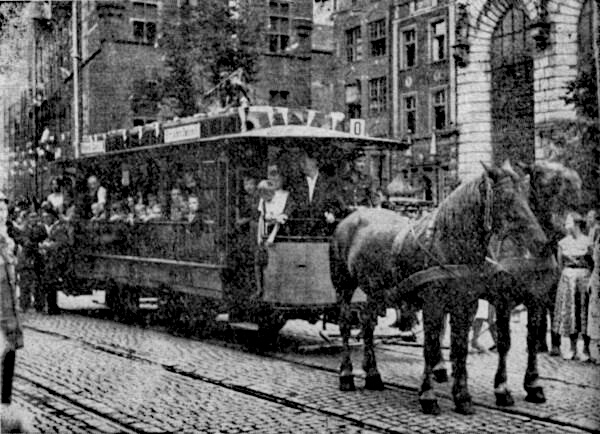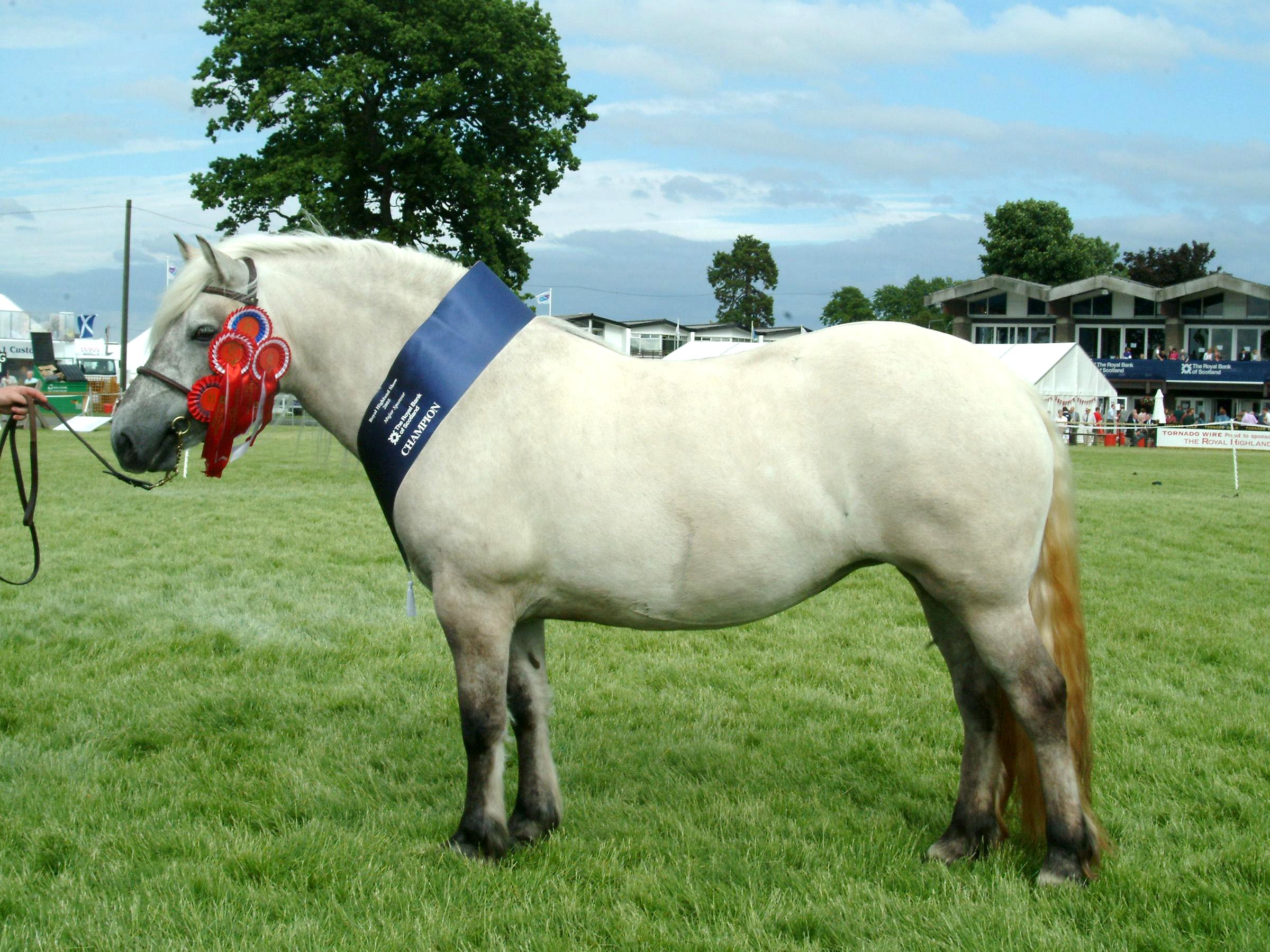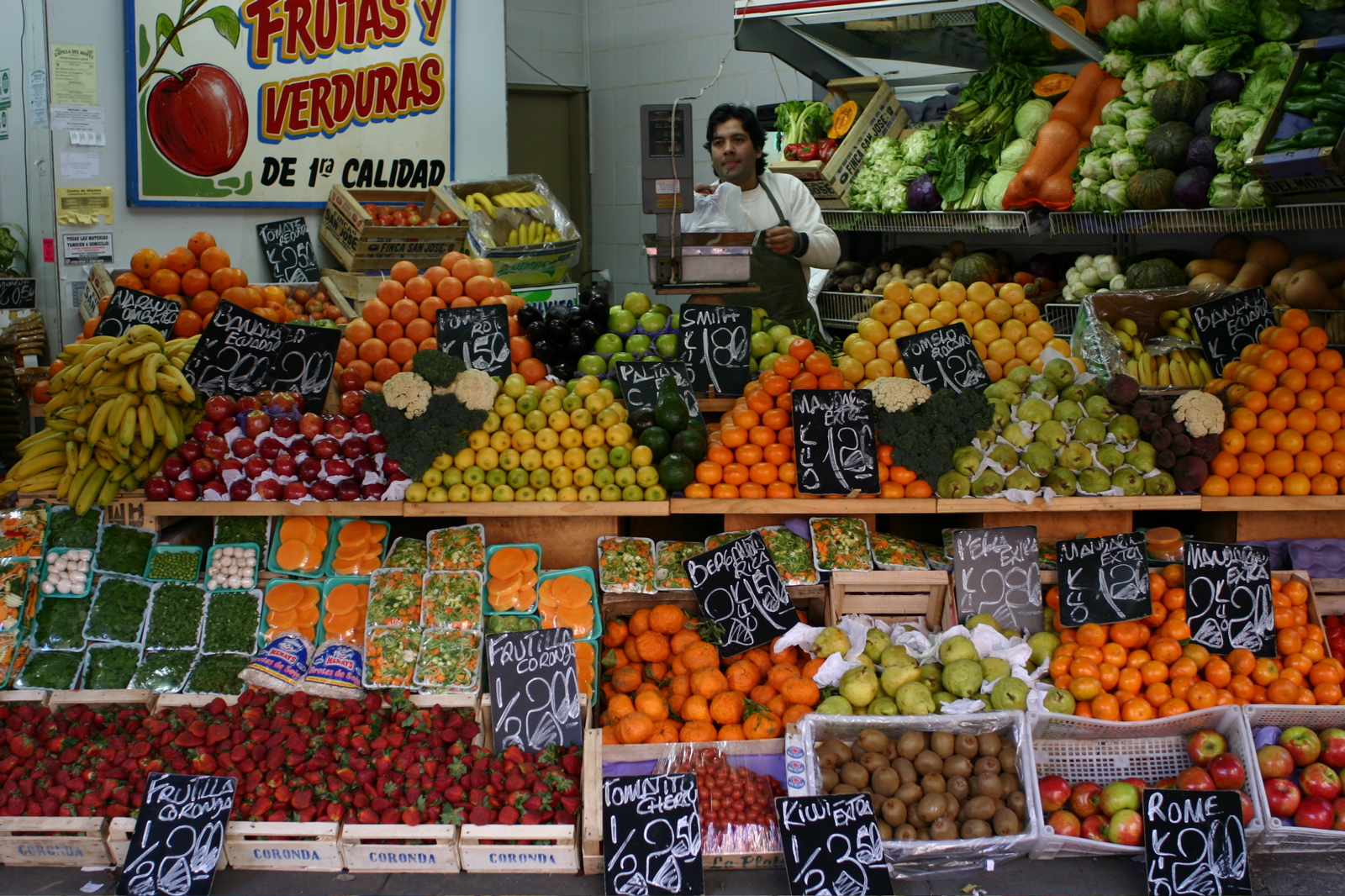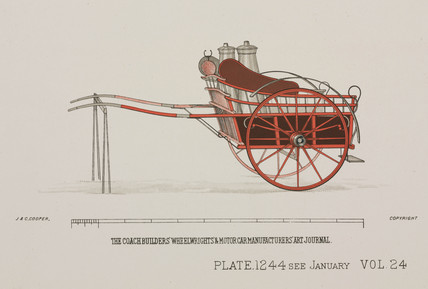|
Horse-drawn Trolley
Among horse-drawn vehicles, a trolley was a goods vehicle with a platform body with four small wheels of equal size, mounted underneath it, the front two on a turntable undercarriage. The wheels were rather larger and the deck proportionately higher than those of a Lorry (horse-drawn), lorry. A large trolley is likely to have had a headboard with the driver's seat on it, as on a lorry but a smaller trolley may have had a box at the front of the deck or the driver seated on a corner of the deck and his feet on a shaft. With a very small trolley, the 'driver' may even have led the horse as a pedestrian. They were normally drawn by a single pony or horse but a large trolley would have a pair. It was primarily an urban vehicle so that, on the paved roads, the small wheels were not a handicap. In any case, the axles would normally be sprung. It was typically used by market fruiterers and greengrocers but commonly also by coal merchants. These would have a headboard to stabilize the fro ... [...More Info...] [...Related Items...] OR: [Wikipedia] [Google] [Baidu] |
Horse-drawn Vehicle
A horse-drawn vehicle is a mechanized piece of equipment pulled by one horse or by a team of horses. These vehicles typically had two or four wheels and were used to carry passengers and/or a load. They were once common worldwide, but they have mostly been replaced by automobiles and other forms of self-propelled transport. General Horses were domesticated circa 3500 BCE. Prior to that oxen were used. Historically a wide variety of arrangements of horses and vehicles have been used, from chariot racing, which involved a small vehicle and four horses abreast, to horsecars or trollies, which used two horses to pull a car that was used in cities before electric trams were developed. A two-wheeled horse-drawn vehicle is a cart (see various types below, both for carrying people and for goods). Four-wheeled vehicles have many names – one for heavy loads is most commonly called a wagon. Very light carts and wagons can also be pulled by donkeys (much smaller than horses), pony, po ... [...More Info...] [...Related Items...] OR: [Wikipedia] [Google] [Baidu] |
Lorry (horse-drawn)
Among horse-drawn vehicles, a lorry was a low-loading trolley. It was used mainly for the carriage of other vehicles, for example for delivery from the coachbuilders or returning there for repair. Its very small wheels were mounted under the deck which had to be wider than the track of the vehicles to be carried. It had two ramps, stowed above the back axle and below the body. These were withdrawn from the lorry and one end of each attached to the back of the deck while the other ends rested on the ground. A winch, mounted on the headboard was then used to draw the load up the ramps and onto the deck. The winch cable, low fixed sideboards and a low hinged tailboard plus lashings retained it there. The lorry was rather like a wooden version of the modern car-carrying trailer, intended for towing behind a car, except that the wheels were wooden, with iron tyres and were not close-coupled. The front ones were on a steering undercarriage. The driver's seat was mounted on the top of ... [...More Info...] [...Related Items...] OR: [Wikipedia] [Google] [Baidu] |
Pony
A pony is a type of small horse ('' Equus ferus caballus''). Depending on the context, a pony may be a horse that is under an approximate or exact height at the withers, or a small horse with a specific conformation and temperament. Compared to a larger horse, a pony may have a thicker coat, mane and tail, with proportionally shorter legs, a wider barrel, heavier bone, a thicker neck and a shorter, broader head. The word ''pony'' derives from the old French ''poulenet'', meaning foal, a young, immature horse. Small horses and ponies were traditionally used for riding, driving and as pack beasts. During the Industrial Revolution, particularly in Great Britain, many were used as pit ponies, hauling loads of coal in the mines. In the modern era they may be kept as children's mounts, for recreational or competitive riding or driving, or for cultural or conservation reasons. Ponies are generally considered intelligent and friendly. They are sometimes also described as stubbor ... [...More Info...] [...Related Items...] OR: [Wikipedia] [Google] [Baidu] |
Horse
The horse (''Equus ferus caballus'') is a domesticated, one-toed, hoofed mammal. It belongs to the taxonomic family Equidae and is one of two extant subspecies of ''Equus ferus''. The horse has evolved over the past 45 to 55 million years from a small multi-toed creature, ''Eohippus'', into the large, single-toed animal of today. Humans began domesticating horses around 4000 BCE, and their domestication is believed to have been widespread by 3000 BCE. Horses in the subspecies ''caballus'' are domesticated, although some domesticated populations live in the wild as feral horses. These feral populations are not true wild horses, as this term is used to describe horses that have never been domesticated. There is an extensive, specialized vocabulary used to describe equine-related concepts, covering everything from anatomy to life stages, size, colors, markings, breeds, locomotion, and behavior. Horses are adapted to run, allowing them to quickly escape predators, and po ... [...More Info...] [...Related Items...] OR: [Wikipedia] [Google] [Baidu] |
Fruiterer
A greengrocer is a person who owns or operates a shop selling primarily fruit and vegetables. The term may also be used to refer to a shop selling primarily produce. It is used predominantly in the United Kingdom and Australia. In the United States, the terms ''produce store'' or ''produce shop'' are used. By the 1940s, produce sales (measured in tonnage) made at grocery stores had surpassed those made at produce stores. While once common in the United Kingdom and Australia, the increase in popularity of supermarkets caused greengrocer shops to become rarer, though they may still be found in smaller towns and villages. Today, greengrocers can also be found in street markets, malls, and supermarket produce departments. Greengrocers' apostrophe Because of its common misuse on greengrocers' signs, an apostrophe used incorrectly to form a plural—such as ''apple's'', ''orange's'', or ''banana's''—is known as a greengrocers' apostrophe The apostrophe ( or ) is a punctua ... [...More Info...] [...Related Items...] OR: [Wikipedia] [Google] [Baidu] |
Greengrocer
A greengrocer is a person who owns or operates a shop selling primarily fruit and vegetables. The term may also be used to refer to a shop selling primarily produce. It is used predominantly in the United Kingdom and Australia. In the United States, the terms ''produce store'' or ''produce shop'' are used. By the 1940s, produce sales (measured in tonnage) made at grocery stores had surpassed those made at produce stores. While once common in the United Kingdom and Australia, the increase in popularity of supermarkets caused greengrocer shops to become rarer, though they may still be found in smaller towns and villages. Today, greengrocers can also be found in street markets, malls, and supermarket produce departments. Greengrocers' apostrophe Because of its common misuse on greengrocers' signs, an apostrophe used incorrectly to form a plural The plural (sometimes abbreviated pl., pl, or ), in many languages, is one of the values of the grammatical category of number. Th ... [...More Info...] [...Related Items...] OR: [Wikipedia] [Google] [Baidu] |
Coal Merchant
Coal is a combustible black or brownish-black sedimentary rock, formed as rock strata called coal seams. Coal is mostly carbon with variable amounts of other elements, chiefly hydrogen, sulfur, oxygen, and nitrogen. Coal is formed when dead plant matter decays into peat and is converted into coal by the heat and pressure of deep burial over millions of years. Vast deposits of coal originate in former wetlands called coal forests that covered much of the Earth's tropical land areas during the late Carboniferous ( Pennsylvanian) and Permian times. Many significant coal deposits are younger than this and originate from the Mesozoic and Cenozoic eras. Coal is used primarily as a fuel. While coal has been known and used for thousands of years, its usage was limited until the Industrial Revolution. With the invention of the steam engine, coal consumption increased. In 2020, coal supplied about a quarter of the world's primary energy and over a third of its electricity. Some iron a ... [...More Info...] [...Related Items...] OR: [Wikipedia] [Google] [Baidu] |
Rag And Bone
A rag-and-bone man or ragpicker (UK English) or ragman, old-clothesman, junkman, or junk dealer (US English), also called a bone-grubber, bone-picker, chiffonnier, rag-gatherer, bag board, or totter, collects unwanted household items and sells them to merchants. Scraps of cloth and paper could be turned into cardboard, while broken glass could be melted down and reused, and even dead cats and dogs could be skinned to make clothes. Traditionally, this was a task performed on foot, with the scavenged materials (which included rags, bones and various metals) kept in a small bag slung over the shoulder. Some rag-and-bone men used a cart, sometimes pulled by a horse or pony. In the 19th century, rag-and-bone men typically lived in extreme poverty, surviving on the proceeds of what they collected each day. Conditions for rag-and-bone men in general improved following the Second World War, but the trade declined during the latter half of the 20th century. However, in more recent years, ... [...More Info...] [...Related Items...] OR: [Wikipedia] [Google] [Baidu] |
Trolley And Lift Van
The trolley was a platform body with four relatively small wheels mounted underneath it, the front two on a turntable undercarriage. It was drawn by a pair of horses and the driver's seat was mounted on the headboard. The lift van was a sturdy wooden box to long, wide and high to the centre of the roof. It had two wrought iron straps passing down the sides and under the bottom, having a sling shackled to holes in the top ends of the straps so that the whole and its contents could be lifted by crane onto the trolley for movement by road, onto a railway truck or into the hold of a ship. It was therefore a logical step on from the pantechnicon van in the development of containerization. The system thereby provided a means of door-to-door transit and was used particularly for furniture removals. The furniture makers and merchants, Maple and Co., in particular, used it to deliver between their depôts in London and Paris. It was also used for the carriage of meat. In this case, ... [...More Info...] [...Related Items...] OR: [Wikipedia] [Google] [Baidu] |
Milk Float
A milk float is a vehicle specifically designed for the delivery of fresh milk. Today, milk floats are usually battery electric vehicles (BEV), but they were formerly horse-drawn floats. They were once common in many European countries, particularly the United Kingdom, and were operated by local dairies. However, in recent years, as the number of supermarkets, small independent grocers and petrol stations A filling station, also known as a gas station () or petrol station (), is a facility that sells fuel and engine lubricants for motor vehicles. The most common fuels sold in the 2010s were gasoline (or petrol) and diesel fuel. Gaso ..., and convenience stores stocking fresh milk has increased, many people have switched from regular home delivery to obtaining fresh milk from these other sources. Characteristics Because of the relatively small power output from its electric motor, a milk float travels fairly slowly, usually around although some have bee ... [...More Info...] [...Related Items...] OR: [Wikipedia] [Google] [Baidu] |
Float (horse-drawn)
A float is a form of two-wheeled horse-drawn cart with a dropped axle to give an especially low load-bed. They were intended for carrying heavy or unstable items such as milk churns. The name survives today in that of the milk float and carnival float. The axle passes beneath the load-bed of the cart but was cranked upwards at each side. This allows the load to be carried low, for stability and ease of loading with heavy objects such as churns or barrels. The high position of the stub axles allows large wheels, giving a smooth ride. The box body is open at the rear, with no more than a chain across for safety. Rather than a driving seat or box, they are driven from a standing position, alongside the load. Floats were drawn by a single horse or, especially in Ireland, a donkey. See also * Brewer's dray Among horse-drawn vehicles, a trolley was a goods vehicle with a platform body with four small wheels of equal size, mounted underneath it, the front two on a turntable unde ... [...More Info...] [...Related Items...] OR: [Wikipedia] [Google] [Baidu] |






.jpg)
